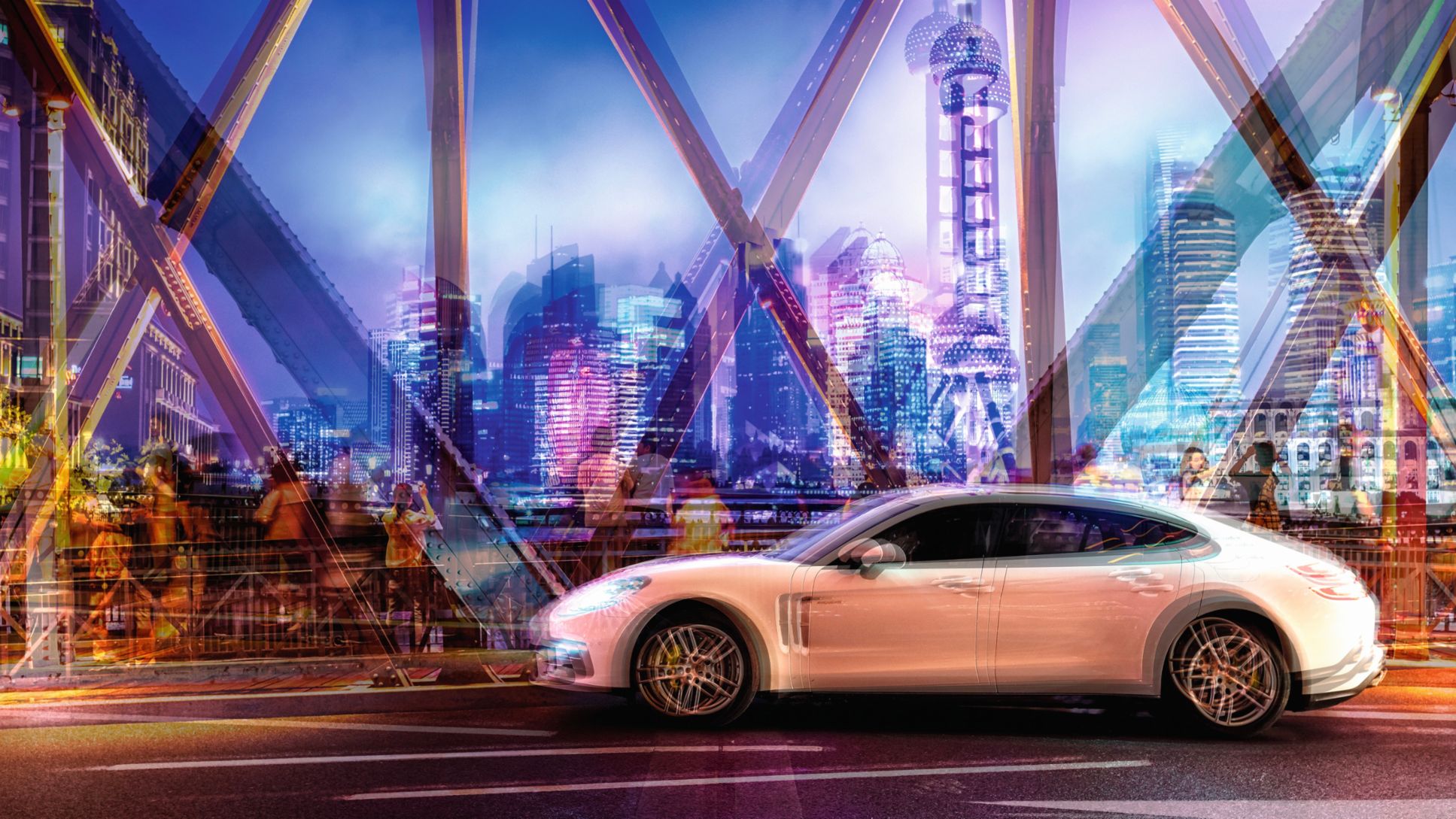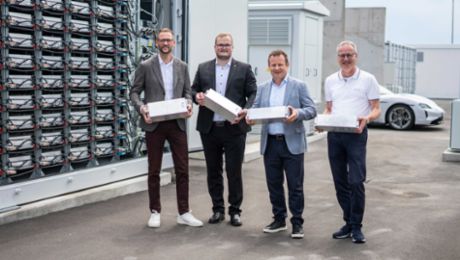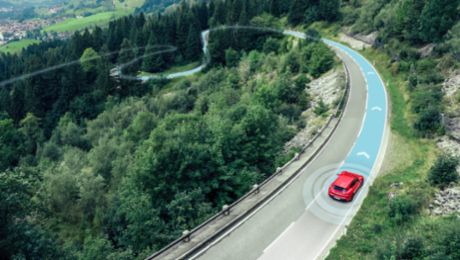In China, the smartphone plays a key role in daily life. Which Chinese app is particularly important for you?
Dr. Jens Puttfarcken: My two most important apps are WeChat and Alipay. I use Alipay to pay for things and to gain access to buildings. But I can also use the app to book a bike or call a taxi.
Kurt Schwaiger: I’ve been leaving my wallet at home for a long time. Beyond WeChat and Alipay, the navigation app on my phone is very important to me. It tells me exactly where I am allowed to go with my license plate and has never let me down.
Dr. Peter Schäfer: A translation app helps me communicate with people on location in China. It’s fascinating and enriching to use it to engage in direct communication with people.
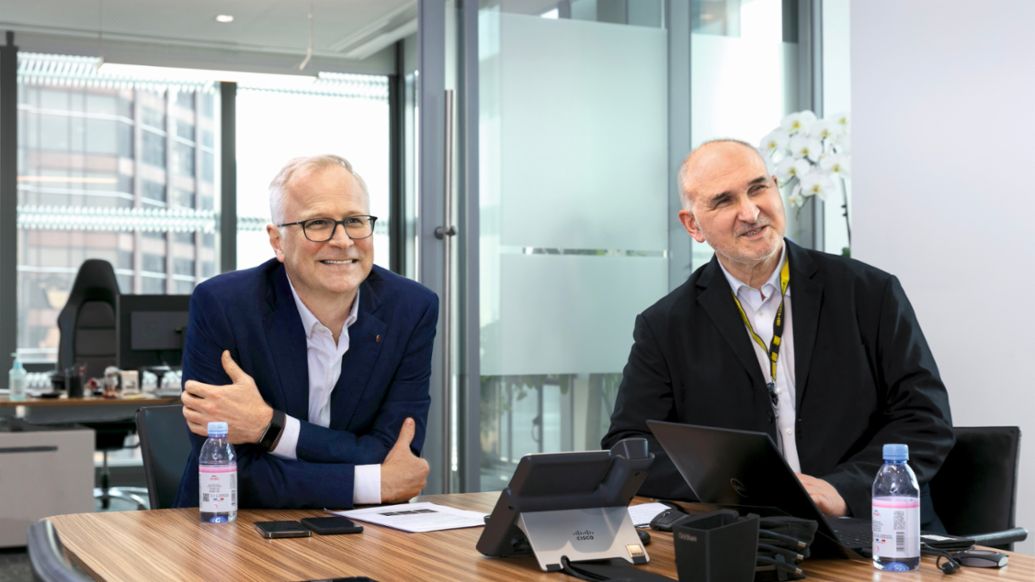
Apps represent only a small sample of technological developments in China. What else is going on at the moment?
Puttfarcken: The expanding connectivity, for one thing. The major cities have all been fully equipped with 5G since last fall. For example, facial recognition is becoming increasingly important for unlocking vehicles. Finally, the advancement of artificial intelligence should make existing technologies and applications even more user-friendly.
Schwaiger: In terms of vehicle development, 5G in particular plays a very important role, for example for autonomous driving. Many start-ups here are working on solutions such as robot taxis and self-driving vehicles. Porsche Engineering is located in Jiading, where there is a 30-square-kilometer test area. It is fully equipped with 5G infrastructure. Autonomous driving is allowed in public and tests with the technology take place daily.
Schäfer: It’s important to note that in China the communication between vehicles and the infrastructure will be crucial. The aforementioned technologies therefore lead to new possibilities, for example in driver assistance systems or automated driving. China is enabling incredibly fast development in this area, while at the same time customers here are also demanding new solutions of this type.
Puttfarcken: Another major topic is electronic components. There is currently an acute shortage of chips, which is why China wants to become more independent from the outside world, for example by producing its own chips. It may therefore be the case that in a few years the country has built up its own technology and then makes technological demands on chips that are geared to the domestic market and cannot easily be met by the Western world.
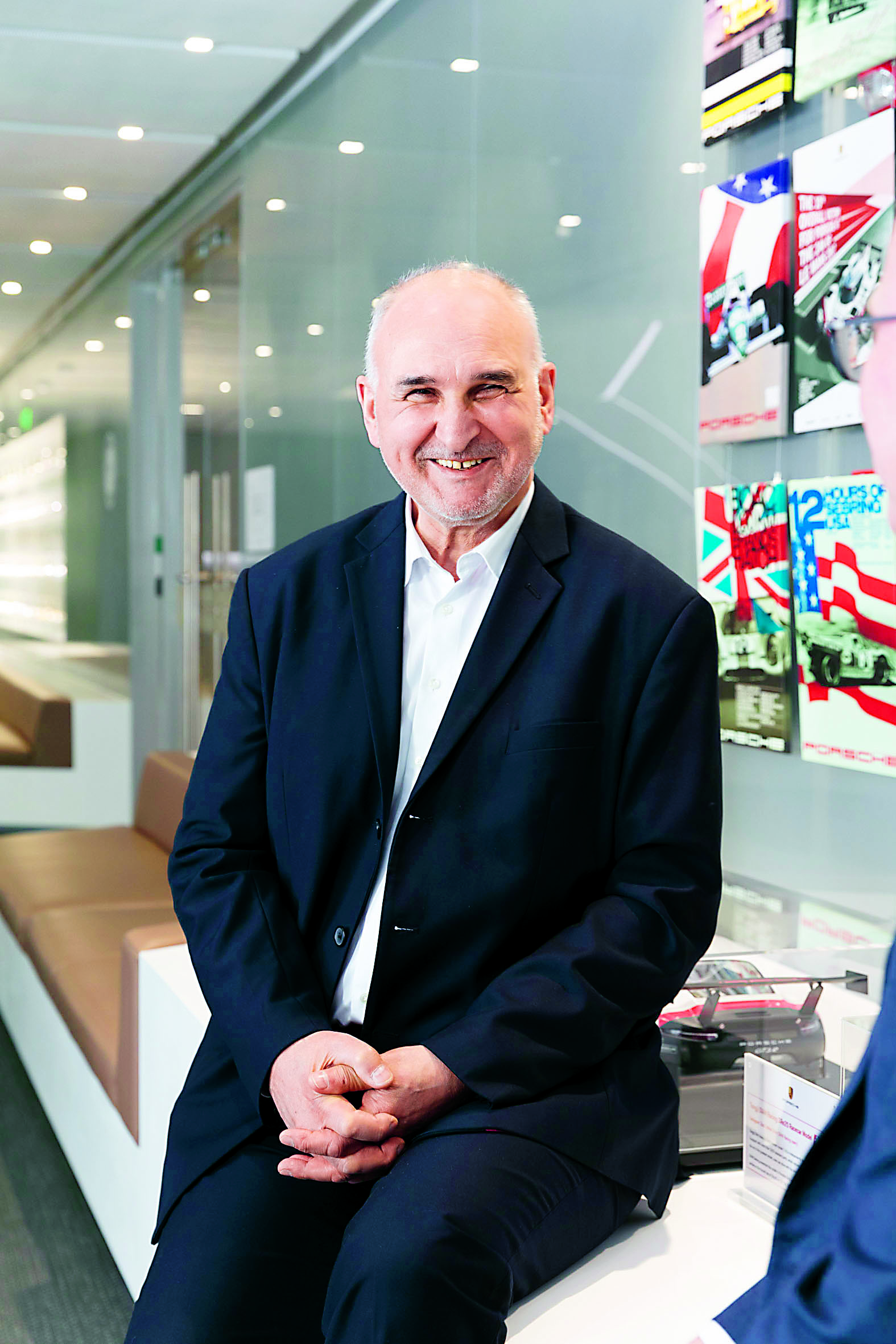
What role does government play in this?
Puttfarcken: It sets the framework with its five-year plans. It’s important to understand that today, a five-year plan is something like a corporate strategy. It defines strategic goals, the implementation of which is entrusted to individual government agencies, but also to provinces or companies. The implementation of these targets flows into the evaluation of Senior Executives of SOEs (State-owned enterprises) or party secretaries, and is therefore an important factor in their careers. Against this backdrop, you can understand the speed with which things are implemented here. In the latest five-year plan, three issues are important to us. First, China wants to strengthen domestic purchasing power and increase demand in the premium sector in particular. At the same time, it wants to open up to foreign investment and increase exports. All of this goes hand in hand with the tendency to decouple from Western technologies and rely increasingly on domestic developments. Second, China aims to stop the rise in carbon dioxide emissions by 2030 and be CO₂-neutral by 2060. Third, the government wants to promote technologies such as artificial intelligence more strongly in order to become the market leader in this area.
Schwaiger: We can see the detachment from Western standards in e-mobility, for example with China-specific standards for charging technology. And the strong promotion of domestic e-cars is also clear, for example through the support by the state of start-ups in this field. At the same time, China is creating major incentives for consumers to buy an electric vehicle—financially, but also by the fact that in the future you may only be allowed to drive in the inner cities with an electric vehicle.
Chinese society is also changing. In what ways does that manifest itself?
Puttfarcken: On average, our customers are 35 years old and almost half of them are women. If this continues, in five to ten years most Porsche buyers will be members of Generation Z, i.e. born between 1995 and 2010. Like everywhere else in the world, this generation has grown up with digitalisation. Constant networking is completely normal for these young Chinese. What is specific to China, however, is that this generation has never known bad times. Rising prosperity is a matter of course for them, and consumption in the premium and luxury segment in particular is viewed positively. Strong economic growth and certainly also the successful handling of the coronavirus pandemic confirm this generation in its belief that it lives in the world’s best system, which will also guarantee growth and consumption in the future.
“Porsche Engineering in Shanghai plays an important role in the development and validation of functions for the Chinese market.” Kurt Schwaiger
What are the implications for the automotive industry?
Schäfer: Young customers expect digital functions in their vehicles that they are also used to from their smartphones. In addition, we are generally experiencing a rapid change in trends and technologies: Generation Z will change their requirements at ever shorter intervals. Our challenge here is to be flexible and fast—and to go with these trends. For this reason, we need short innovation cycles. Being here on the ground is also an essential requirement. This is the only way the industry can understand Chinese customers and develop and test new technologies. We are well positioned for this with our location in Shanghai. We are developing the digital vehicle technologies of the intelligent and connected vehicle of the future there.
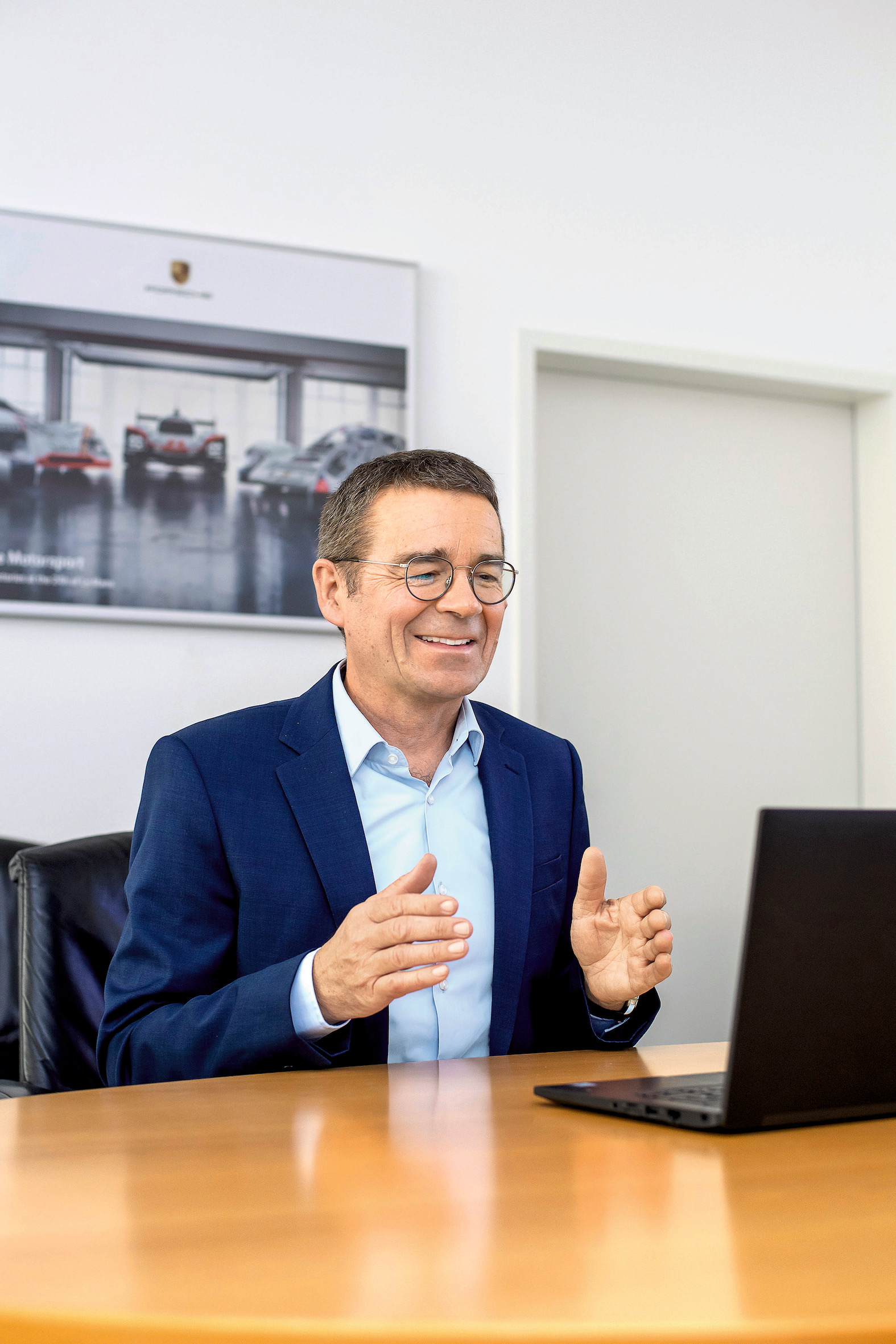
Puttfarcken: We have to remain relevant to our Generation Z customers. That means keeping a close eye on current developments and implementing them quickly. That’s why the collaboration with Porsche Engineering and Porsche Digital is so important. Because it is precisely in the digital area that we see the greatest demands from the market.
Three megatrends are e-mobility, connectivity, and autonomous driving. What’s happening in these areas?
Puttfarcken: China is the largest market for battery electric vehicles: more than 1.5 million e-cars are on the roads here. Roughly 50 percent of them are basically scooters with four wheels and a slightly larger passenger compartment. But here, too, the trend is now towards larger models from the C and E segments (medium and executive cars, respectively). What the newer vehicles in particular have in common is a high degree of standard digitalisation: they offer, for example, facial recognition and autonomous parking, as well as features that are not necessary from a Western perspective, such as light concerts visible from afar on the radiator and rear, or individual color and lighting concepts in the interior.
Schwaiger: In the past ten years, China has learned to build cars of high quality. OEMs now develop their own standard components. The next stage involves intelligent electronic systems that are very highly connected with the infrastructure. The trend in China is clearly moving in the direction of internet-based cars.
How is Porsche addressing these trends and challenges?
Puttfarcken: In the future, we will integrate the requirements from the Chinese market into our processes even more extensively and at an even earlier stage. We get first-hand information here in China and this flows into the development and testing that we carry out locally together with Porsche Engineering. We cannot develop products for the Chinese transport infrastructure in Germany.
“We get first-hand information here in China and this flows into development and testing that we carry out locally together with Porsche Engineering.” Dr. Jens Puttfarcken
What approach is Porsche Engineering taking in China?
Schäfer: We have a long tradition of collaboration with Chinese customers. As we have been active locally for more than 20 years, we know the Chinese market very well and can combine this knowledge with our specific expertise in automotive and software development. In order to meet the requirements of innovation drivers such as connected driving and intelligent software solutions, we are continuously expanding our collaboration with our Chinese partners and also with Porsche AG locally. We see ourselves as a link between the development center in Weissach and the activities in China. In this way, we play a significant role in the China-specific features and functions that go into a Porsche vehicle.
Schwaiger: Porsche Engineering Shanghai develops solutions for Chinese OEMs and the VW Group, including Porsche. There are currently around 100 engineers working at Anting in all areas of automotive mobility. In the future, we will develop even more China-specific digital functions. The idea is to integrate the functions of mobile devices into the vehicle, such as WeChat or Alipay. We are also working intensively on highly automated driving. This can only be developed and tested in the transport infrastructure available here.
Puttfarcken: For us, this is an ideal setup. Porsche China has the task of bringing our vehicles to market. To do this, however, we also need the technical expertise of Porsche Engineering in China. The collaboration offers us an excellent opportunity to implement wishes from the market locally. We intend to intensify this fruitful cooperation in the future.
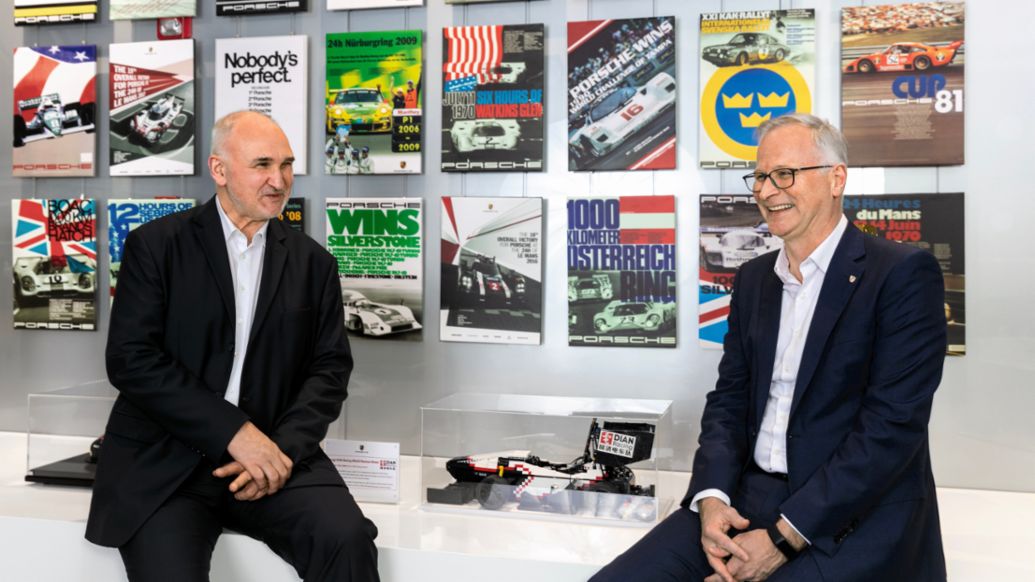
So local development and testing in China is essential?
Puttfarcken: Yes, because different traffic rules apply here, and there are also big differences in driving. Think of the elevated roads or the fact that you sometimes have to drive all the way to the right to turn left. You can only test that here in China.
Schwaiger: It is also not allowed to bring geobased data or video data outside the country. Porsche Engineering in Shanghai therefore plays an important role in the development and validation of functions for the Chinese market.
What will the Chinese automotive market look like in 2030?
Puttfarcken: The entire automobile market will continue to grow at considerable rates, with the number of new registrations rising to 30 million in the coming years. The premium and luxury segment is likely to perform even better than the market as a whole. At the same time, we will see a significant push with battery electric vehicles because they make it easier to get started with digital networking and digital services. This is the best way for carmakers to connect their products with the reality of their customers’ lives, which is heavily influenced by networking.
“We know the Chinese market very well and can combine this knowledge with our specific expertise in automotive and software development.” Dr. Peter Schäfer
How important are collaborations with the scientific community in your work?
Schwaiger: Very important. Porsche Engineering has a long-standing collaboration with Tongji University. In 2018, we launched the Tongji Porsche Engineering Symposium, which brought together top managers from the Chinese automotive industry and unfortunately had to be postponed in 2020 due to the coronavirus. We also support Tongji University’s DIAN student racing team with our knowledge in the development of their e-vehicle for Formula Student Electric. Our experts also hold lectures there to teach students about the latest developments. And finally, we support the Intelligent and Connected Vehicles professorship. Together with Porsche China, a first-class collaboration has been established in which both sides share their respective experience, promote science and education, and advance technologies.
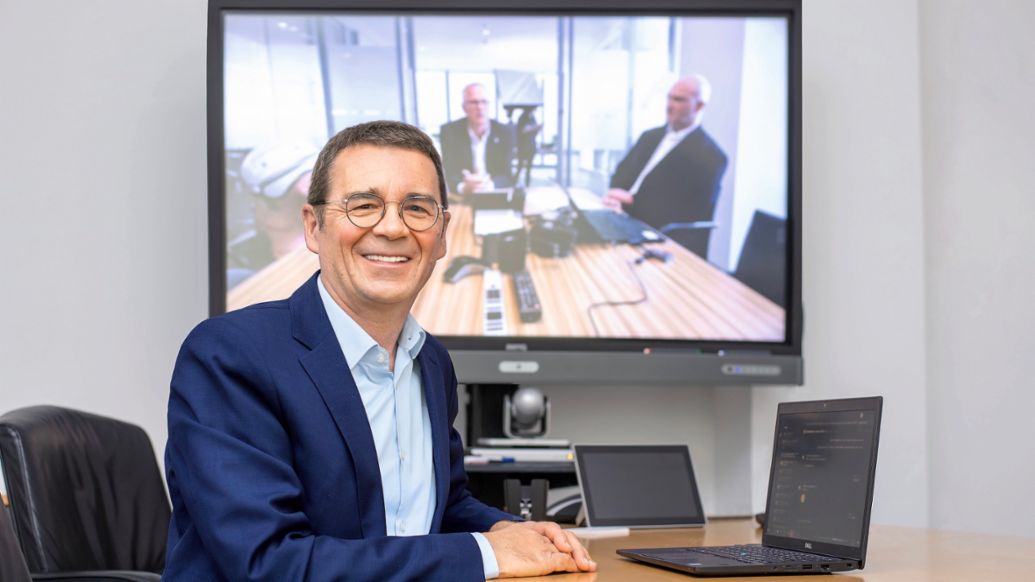
Finally, a personal question: What is your favorite food in China?
Puttfarcken: Food is almost like a religion in China. Everything is of high quality and tastes great. Here in Shanghai, I especially like the dumplings. As for China as a whole, my favorite is Szechuan cuisine with its spiciness and sophistication.
Schäfer: I am fascinated by the incredible variety of Chinese cuisine. My favorite is vegetables of all kinds. It’s a special treat for me every time.
Schwaiger: What appeals to me most is the Chinese culture of sharing. Food is always understood as communal. I really appreciate this open way of eating—it encourages exchange and dialog.
Info
Text: Jost Burger
Photos: Yolanda vom Hagen, Martin Stollberg
Text first published in the Porsche Engineering Magazine, issue 2/2021
